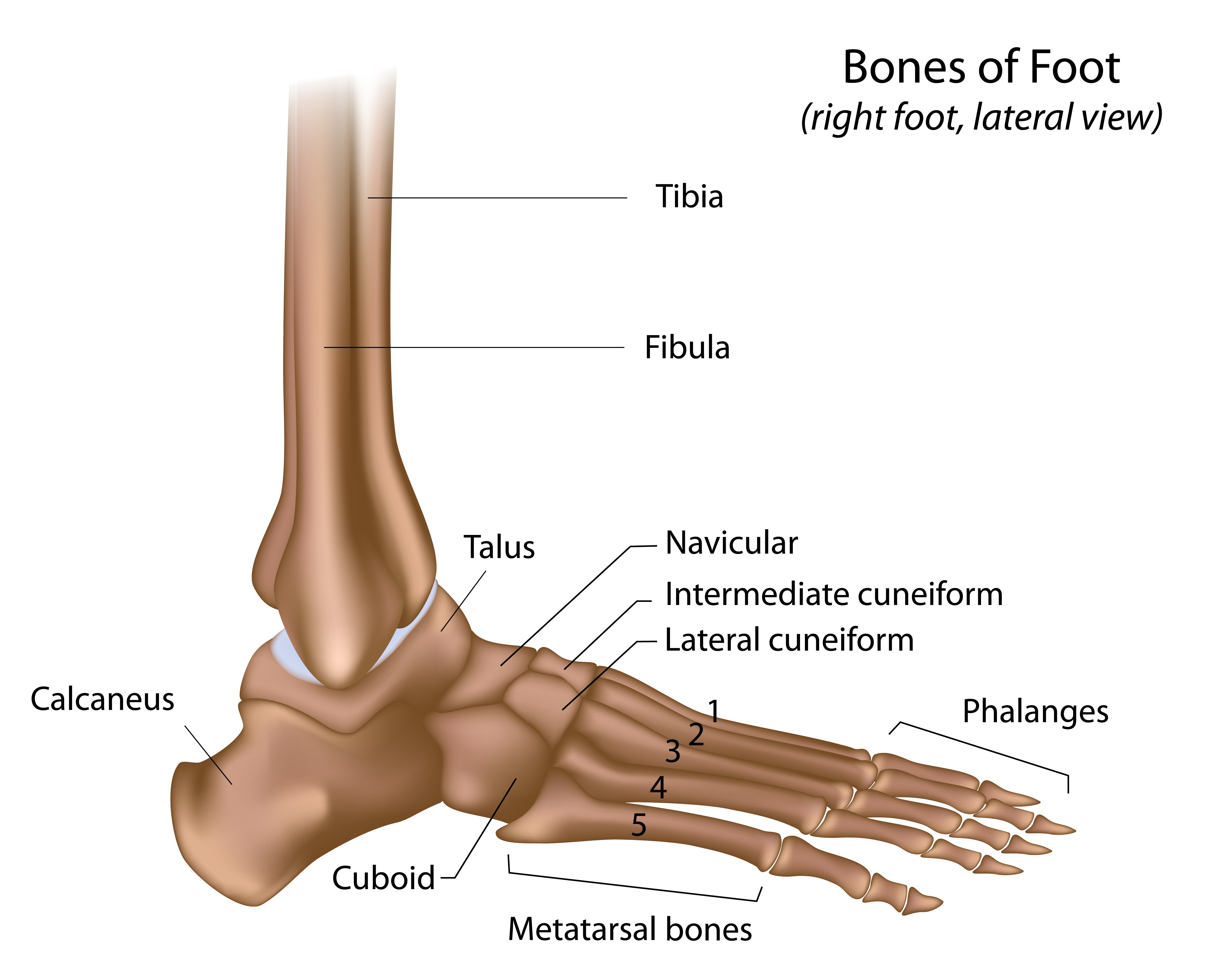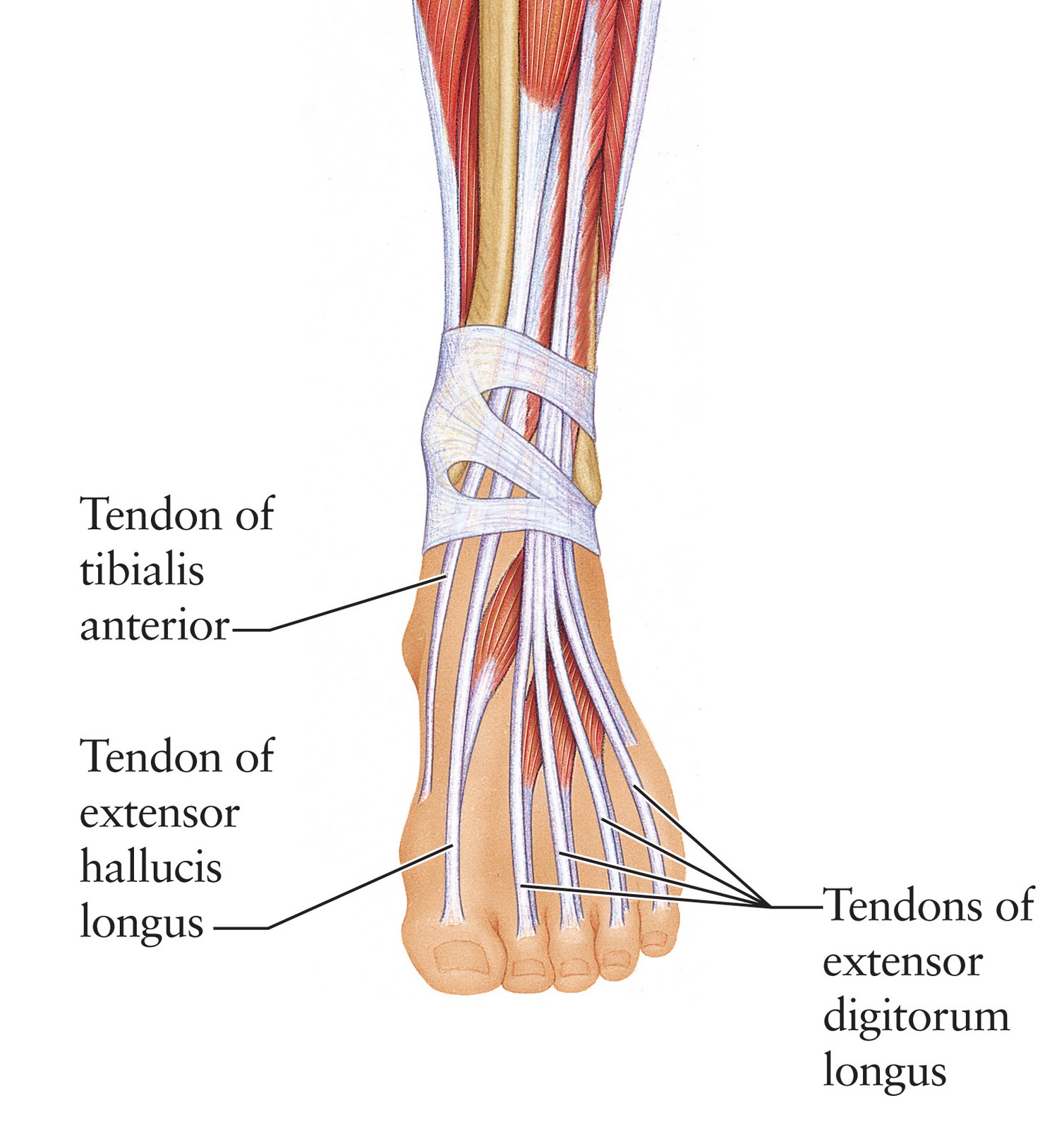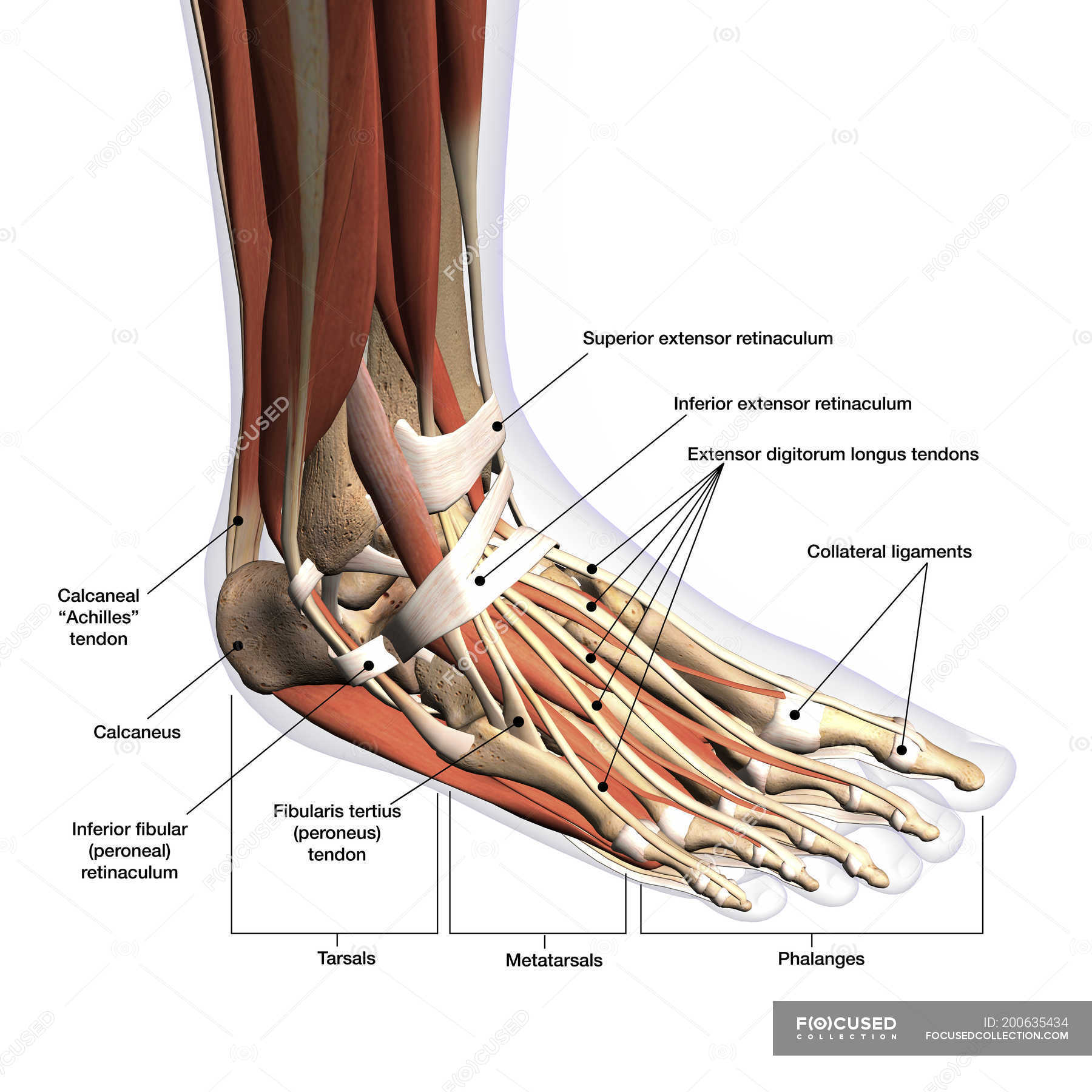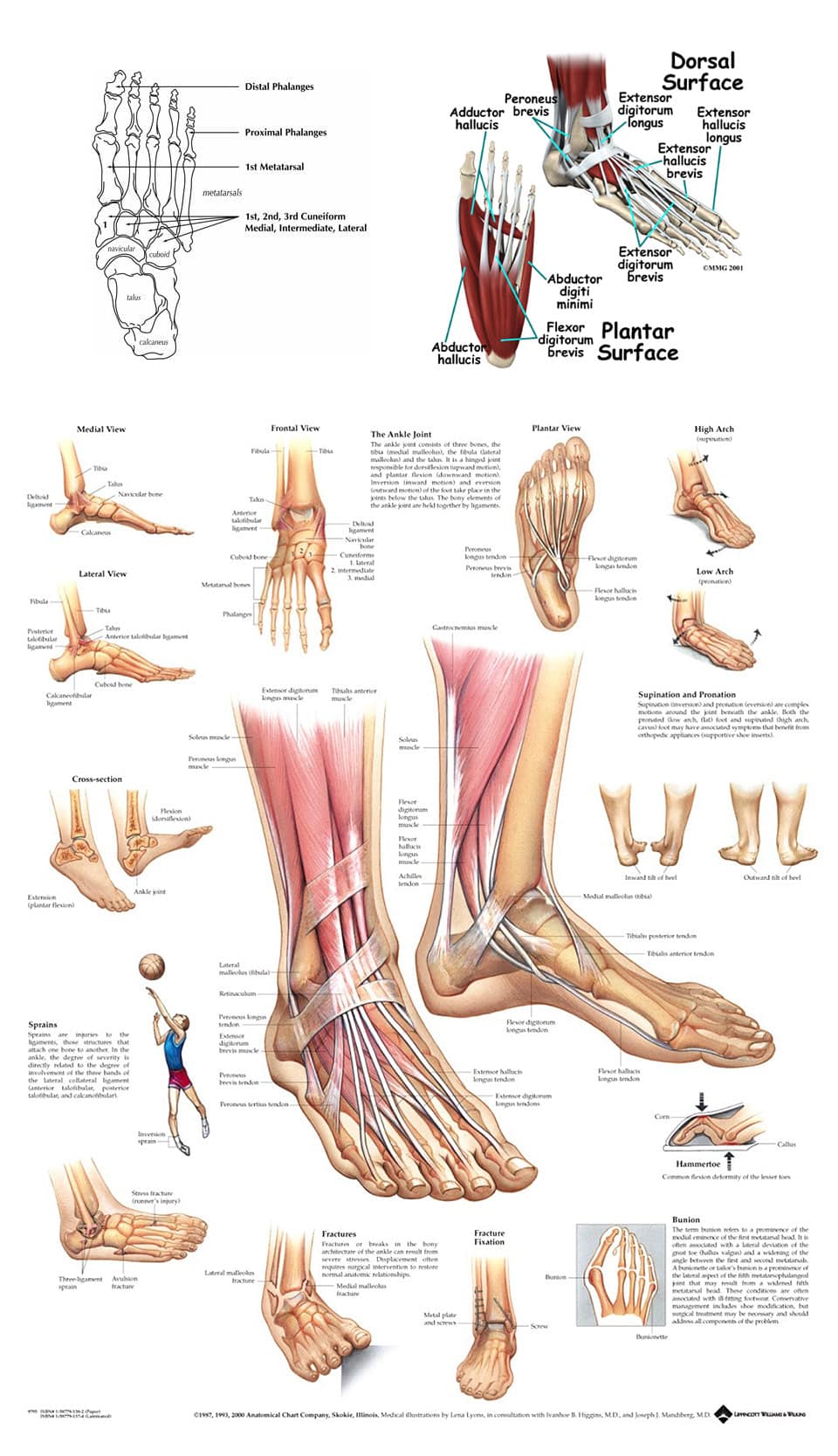
Ankle and Foot Pain Massage Therapy Connections
Morton's neuroma is a common foot problem where compression on a nerve in the ball of the foot causes burning, tingling, and pain near the third and fourth toes. It can make you feel like you have a pebble in your shoe or on a fold in your sock. Wearing high heels is a common cause of Morton's neuroma.

Know Your Foot American Foot & Ankle
The anatomy of the foot. The foot contains a lot of moving parts - 26 bones, 33 joints and over 100 ligaments. The foot is divided into three sections - the forefoot, the midfoot and the hindfoot. The forefoot. This consists of five long bones (metatarsal bones) and five shorter bones that form the base of the toes (phalanges).

Understanding the Foot & Ankle Scientific Publishing
The foot (pl.: feet) is an anatomical structure found in many vertebrates.It is the terminal portion of a limb which bears weight and allows locomotion.In many animals with feet, the foot is a separate [clarification needed] organ at the terminal part of the leg made up of one or more segments or bones, generally including claws and/or nails.

Human Anatomy for the Artist The Dorsal Foot How Do I Love Thee? Let
Tarsals. The tarsals are a group of seven bones close to the ankle. The proximal tarsal bones are the talus and the calcaneus, which is the largest bone of the foot. The talus is on top of the.

Foot Anatomy and Function पाद pāda Elliot's WebSite
Gastrocnemius (calf muscle): One of the large muscles of the leg, it connects to the heel. It flexes and extends the foot, ankle, and knee. Plantaris: This small, thin muscle is absent in about.

Anatomy of human foot with labels on white background — ankle, leg
Bones of foot. The 26 bones of the foot consist of eight distinct types, including the tarsals, metatarsals, phalanges, cuneiforms, talus, navicular, and cuboid bones. The skeletal structure of.

Muscles of the Leg and Foot Classic Human Anatomy in Motion The
The foot is a complex anatomic structure composed of numerous bones, joints, ligaments, muscles, and tendons responsible for the complex coordinated movements of gait and our ability to stand upright. By definition, the foot is the lower extremity distal to the ankle joint. The ankle joint (sometimes referred to as the tibiotalar joint) is the result of the assembly of the talus and the recess.

Toe Dislocation JOI Jacksonville Orthopaedic Institute
A solid understanding of anatomy is essential to effectively diagnose and treat patients with foot and ankle problems. Anatomy is a road map. Most structures in the foot are fairly superficial and can be easily palpated. Anatomical structures (tendons, bones, joints, etc) tend to hurt exactly where they are injured or inflamed.

Foot and Ankle Anatomical Chart Anatomy Models and Anatomical Charts
Foot. The foot is the lowermost point of the human leg. The foot's shape, along with the body's natural balance-keeping systems, make humans capable of not only walking, but also running.

Foot Anatomy and Function पाद pāda Elliots World
The Anatomy of Feet: Bones and Structure. The foot is composed of 26 bones, making up about one-quarter of all the bones in the human body. These bones are divided into three main regions: the hindfoot, midfoot, and forefoot. The hind foot consists of the talus and calcaneus bones, which form the ankle joint and provide stability for weight.

Anatomy of the Foot and Ankle Astoria Foot and Ankle Surgery
These bones are arranged in two rows, proximal and distal. The bones in the proximal row form the hindfoot, while those in the distal row from the midfoot. Hindfoot. Talus. Calcaneus. The talus connects the foot to the rest of the leg and body through articulations with the tibia and fibula, the two long bones in the lower leg. Midfoot. Navicular.

image lateral_ankle for term side of card Ligament Tear, Ligaments And
Ligaments of the Foot and Ankle. Tell us where the pain is. Use our interactive tool. Use our Anatomy tools to learn about bones, joints, ligaments, and muscles of the foot and ankle. FootEducation is committed to helping educate patients about foot and ankle conditions by providing high quality, accurate, and easy to understand information.

Pin by Ryan A. Castillo on Anatomy Reference Human skeleton anatomy
The foot is the region of the body distal to the leg that is involved in weight bearing and locomotion. It consists of 28 bones, which can be divided functionally into three groups, referred to as the tarsus, metatarsus and phalanges. The foot is not only complicated in terms of the number and structure of bones, but also in terms of its joints.

Diagram Of A Human Foot Human Foot Diagram Anatomy Organ Anatomy
Use these bones of the foot quizzes to master your identification skills. Overview of the bones of the foot and their divisions into the hindfoot, midfoot and forefoot. With a total of 26 bones in each foot, learning the bony anatomy of the foot is no piece of cake. That is, the memorization aspect.

Foot Anatomy Muscles Foot Archives Anatomy Human Body Foot anatomy
Dr. Ebraheim's educational animated video describes anatomical structures of the foot and ankle, The Bony Anatomy, The Joints, Ligaments, and the Compartment.

hand bone and tendon chart Artist The Dorsal Foot How Do I Love
Foot and ankle anatomy consists of 33 bones, 26 joints and over a hundred muscles, ligaments and tendons. This complex network of structures fit and work together to bear weight, allow movement and provide a stable base for us to stand and move on. The foot needs to be strong and stable to support us, yet flexible to allow all sorts of complex.